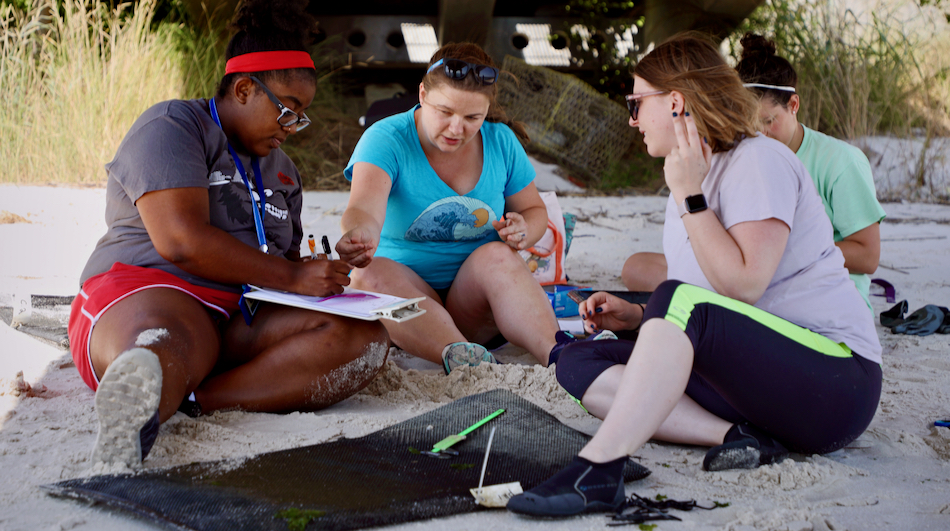NOAA funds VIMS to study impact of ocean acidification on oysters
Team will assess vulnerability of aquaculture and restoration efforts in Bay
The excess carbon dioxide responsible for global warming also increases the acidity of seawater, challenging the growth and survival of oysters and other shellfish. A team led by researchers at the Virginia Institute of Marine Science is now helping oyster growers and restoration specialists better manage their future responses to acidification in the Chesapeake Bay.
The team, funded by the NOAA Ocean Acidification Program, is led by VIMS researchers Marjy Friedrichs and Emily Rivest, along with David Wrathall of Oregon State University. Other team members include Mark Brush, Pierre St-Laurent, and Karen Hudson of VIMS, Aaron Bever of Anchor QEA, and Bruce Vogt of NOAA’s Chesapeake Bay Office. The team calls their project STAR, for Shellfish Thresholds and Aquaculture Resilience.
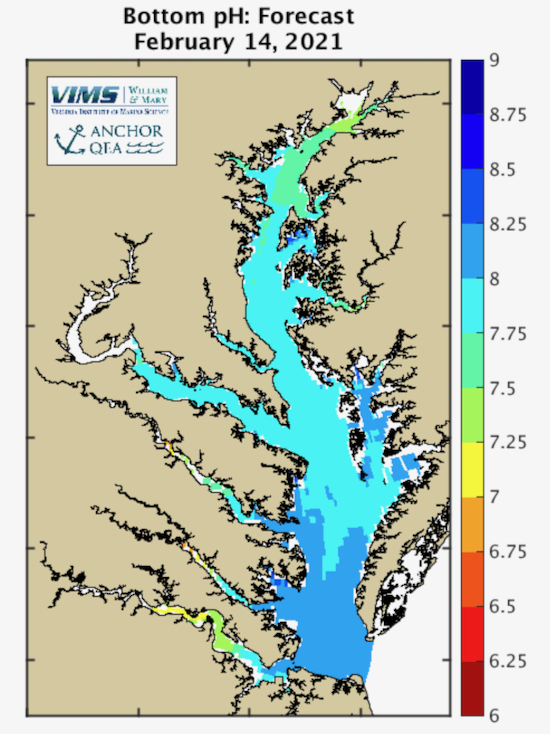
“Coastal acidification and its associated co-stressors present a serious and credible threat to the success of both oyster aquaculture and oyster restoration in the Bay,” says Friedrichs. The co-stressors include nutrient pollution, warmer Bay waters, and pulses of freshwater from rainstorms made more intense by global atmospheric changes. Previous research has shown these factors can intensify the negative impacts caused by ocean acidification alone.
Increased seawater acidity hampers the growth and survival of oysters and other shellfish by eating away at their calcium carbonate shells, the same process that causes carbonated sodas to corrode the enamel of human teeth. It also reduces the number of carbonate ions dissolved in seawater, making it more difficult for oysters to build their shells in the first place. Acidification is particularly challenging to oyster larvae and juveniles.
Project goals
The goal of the 3-year project is to understand the vulnerability of shellfish aquaculture and restoration efforts to ocean acidification. To accomplish this, the team is integrating results from a high-resolution, 3-D model of the Chesapeake Bay; water-quality data from ongoing monitoring programs; recent studies of ocean acidification and its effects on shellfish; and information from aquaculture stakeholders. 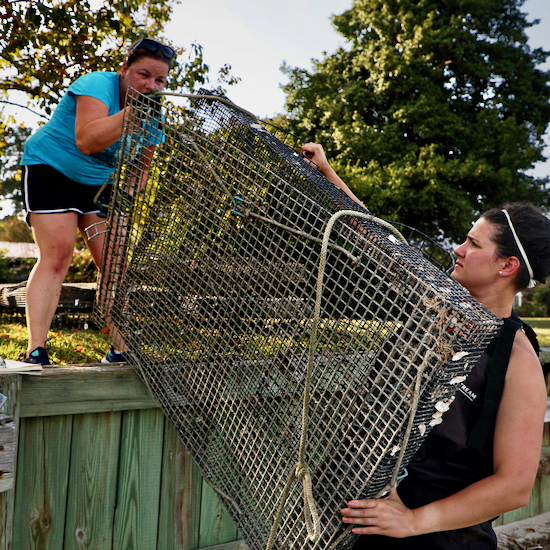 The study will develop tools for forecasting acidification thresholds to help commercial shellfish growers make more informed decisions, thus helping to protect an industry that in recent years has generated around $15 million in farm-gate value in Virginia, and $9 million in Maryland.
The study will develop tools for forecasting acidification thresholds to help commercial shellfish growers make more informed decisions, thus helping to protect an industry that in recent years has generated around $15 million in farm-gate value in Virginia, and $9 million in Maryland.
“Recent research has given us a clearer understanding of the physiological vulnerability of oysters to ocean acidification,” says Rivest, “but we still lack a basic understanding of how vulnerability might differ among oyster hatcheries, farms, public-harvest reefs, or coastal restoration projects. 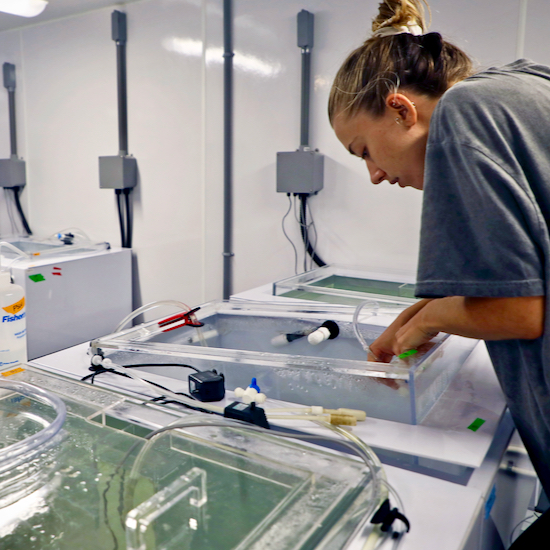 This knowledge gap is what motivated us to submit our proposal.”
This knowledge gap is what motivated us to submit our proposal.”
The study represents a state-of-the-art integration of physical, ecological, biological, and social dimensions of oyster aquaculture. “The impacts of ocean acidification aren’t just a problem for the physical sciences,” says Wrathall. “Addressing them also requires a profound understanding of the economic, political, and regulatory pressures that oyster growers face.” The study will include social science field research focusing on key stakeholders in Virginia and Maryland.
VIMS’ $1.1 million Chesapeake Bay oyster project is one of many vulnerability assessment efforts around the U.S.; one element of the nationwide strategy NOAA is using to guide acidification science for the coming decade. Developed by nearly 70 federal researchers and academic partners, the strategy calls for a Regional Vulnerability Assessment (RVA) in each of six U.S. regions with differing ocean conditions, marine species, and industry concerns.
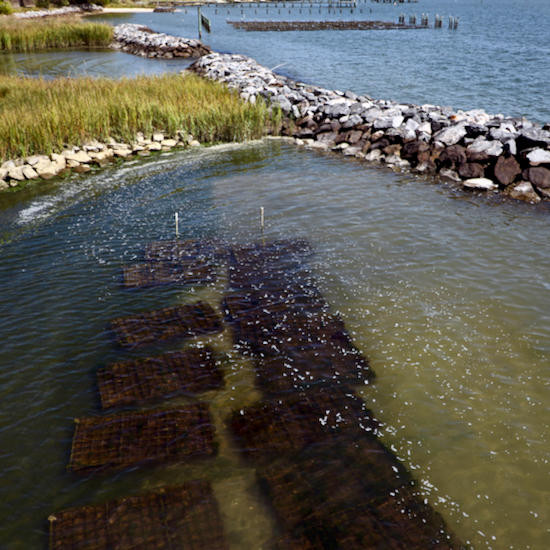
"Years of physical, biological, ecological research has paved the way to understand the vulnerability of human communities and industries, says Erica Ombres, NOAA Ocean Acidification Program Manager. “This important work shows us how we can adapt and be resilient in the face of a changing ocean."
Related work
The current project builds on the findings of several previous projects funded at VIMS by the NOAA Southeast RVA program, which focused on how ocean acidification affects oyster physiology and the chemistry of the Chesapeake Bay ecosystem. The new project will add a detailed analysis of the oyster industry gained through interviews and questionnaires administered to growers, watermen, and restoration managers and practitioners. By integrating these sociological data with information from their high-resolution, biogeochemical computer model, the researchers hope to be able to project when and how levels of ocean acidity might exceed thresholds of resilience identified by the different stakeholder groups.
Also funded this year were vulnerability assessments in the Northeast and California Current. The Northeast Region project will assess the vulnerability of the $500 million sea-scallop fishery to ocean acidification. The California Current project will assess the vulnerability of coastal fishing communities in California and Oregon. The other three RVA regions are the Gulf of Alaska, Gulf of Mexico, and Coral Ecosystems.

